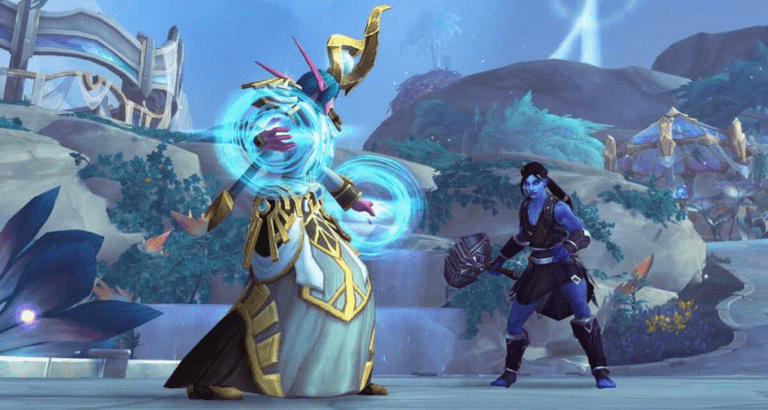As smartphones have taken center stage in everyday life, they’ve reshaped how, when, and why players engage with games. From short bursts of play during a commute to hours-long sessions fueled by in-app purchases and social competition, mobile gamers are unlike any other category of players.
This article explores what user behavior in mobile games really means, how it differs from user patterns in console and PC gaming, and why understanding it is vital for developers, publishers, and anyone seeking to create experiences that are not just played but lived. Let’s dive into what drives mobile gamers, how their actions shape the industry, and how this knowledge can be transformed into exceptional games that resonate with players and developers like us!
Read also: The foundations of outstanding mobile game design
What is user behavior in mobile games?
Before dissecting the specifics, it’s important to define user behavior in mobile games. In this context, this refers to how players interact with a mobile game, the choices they make, the features they engage with most, their frequency of play, session length, spending habits, and even their churn tendencies. These behaviors are not random. They are driven by internal motivations, emotional triggers, environmental factors, and game mechanics that either meet or fail to meet their expectations.

In mobile gaming, this situation is particularly dynamic because the platform itself promotes quick interactions. Unlike console or PC games that often require dedicated time and space, mobile games fit seamlessly into the nooks and crannies of daily life. This difference dramatically impacts how developers must think about onboarding, engagement loops, difficulty progression, and monetization strategies.
Why user behavior changes in mobile games: does it differ from the usual?
Mobile users are unique in that they are often multitasking, distracted, or on the move. In other words, they play in fragmented time slots, whether waiting for a meeting to start, commuting, or even during lunch breaks. This creates a need for game experiences that are immediately rewarding, easy to resume, and intuitively designed.
Another critical aspect is the accessibility of mobile platforms. Players don’t need to purchase expensive hardware. With just a smartphone and an internet connection, anyone can start playing, and this inclusivity brings a vast and diverse audience. Such variety means user behavior varies wildly across demographics, cultures, and regions, making analytics and segmentation key tools for understanding what players want.
Moreover, mobile users are inundated with options. With millions of apps available, loyalty is fragile. If a game fails to capture attention within the first few minutes, it’s likely to be uninstalled. This behavior forces developers to frontload their best features and streamline tutorials to hook players from the first tap.
The psychology behind it all
To truly grasp the concept at hand, you must consider the psychological triggers that make mobile gaming addictive and engaging. Mobile games are often designed around psychological models like the Fogg Behavior Model or the Hooked Model, which focus on triggering action through motivation, ability, and prompts.

Mobile games, for example, often deploy reward systems such as daily login bonuses, loot boxes, and time-limited events that tap into users’ fear of missing out (FOMO). The variable reward structure, similar to what is found in slot machines, keeps players coming back. Social mechanics, such as guilds or leaderboards, introduce a sense of community or competition that fuels consistent engagement.
These mechanics are deeply embedded into the design, affecting how users behave. When analyzing user behavior, it’s not just about what players do, but why they do it. For example, some users might engage deeply with customization options, signaling a need for self-expression. Others might favor fast, action-oriented play, indicating a preference for adrenaline and challenge. By studying these patterns, developers can fine-tune experiences that resonate on an emotional level.
Patterns of user behavior in mobile games
Several behavioral patterns are commonly observed in mobile gaming. One of the most notable is short-session engagement. Mobile players often prefer games they can play in three to five-minute increments. This influences everything from level design to loading speed.
Another key pattern is the preference for free-to-play models. Most mobile users are not paying customers at first. Instead, their behavior is shaped by the availability of content and features that are accessible without payment. It is only after building trust and enjoyment that users are likely to spend money. This makes the first-time user experience (FTUE) critical. Poor onboarding can result in immediate churn, whereas well-paced tutorials and early wins encourage continued play.
There is also a strong behavior trend toward personalization. Mobile players expect experiences tailored to their playstyle, achievements, and even location or time zone. Games that adapt to these expectations through personalized offers, difficulty scaling, or targeted content updates see better retention and lifetime value.
User retention and churn in mobile games

User retention is a pillar of mobile games as a whole; a game’s long-term success is measured by how many users keep coming back. Retention metrics such as Day 1, Day 7, and Day 30 retention rates are often used to evaluate whether the core loop of a game is compelling enough.
When users stop engaging, it’s referred to as churn. Churn is one of the most important behaviors to track and understand. High churn often signals problems in game design, monetization strategy, or user experience. By conducting cohort analysis, developers can observe behavior trends across groups of players and identify where and why engagement drops.
To counteract churn, games employ re-engagement tactics like push notifications, in-game events, or special rewards for returning players. These strategies are only effective if based on accurate user behavior data. A well-timed incentive aligned with user interest can re-spark engagement, while generic prompts are often ignored.
Our perspective: turning behavior into opportunity
At Main Leaf, we’ve witnessed firsthand how nuanced and valuable understanding user behavior in mobile games can be. Our team uses behavior data not only to inform design decisions but to co-create gameplay experiences that feel responsive, rewarding, and alive. In our full development and co-development projects, we incorporate behavioral analysis from the earliest stages to ensure the game evolves with its players.
Our skills in project management, player analytics, and cross-disciplinary collaboration allow us to help publishers and partners transform raw data into meaningful experiences. From adjusting difficulty curves to personalizing offers, we believe behavior-led development is the future of mobile gaming.
The journey is about empathy, insight, and precision. Developers who truly listen to how players behave and why gain the power to craft games that resonate on a personal level – as we’ve learn here, it’s a process that requires creativity, technical know-how, and a willingness to adapt constantly.
For studios and publishers ready to go beyond guesswork and embrace behavior-driven design, this is a golden era. And for those looking for a reliable partner in that journey, our team at Main Leaf is here to help. With years of experience in crafting mobile experiences that captivate and convert, we believe in games that speak to users because they are built around them!
We specialize in creating memorable experiences, and we can directly help you design and develop games specifically built with strong mobile features in mind. Plus, we provide skilled outsourcing for any development need you have. Let us put our hands to work and build your awesome game together.

